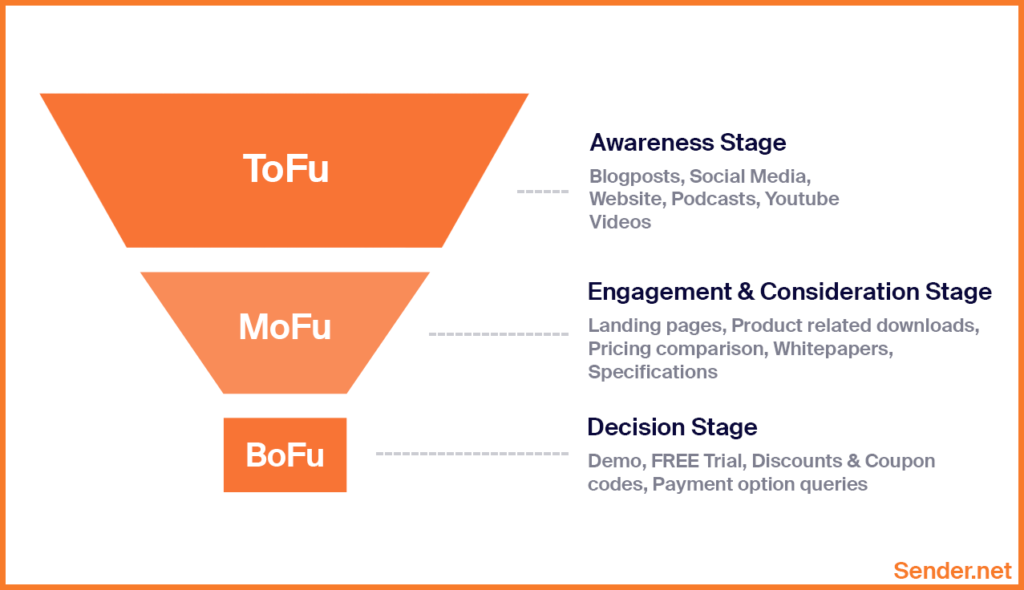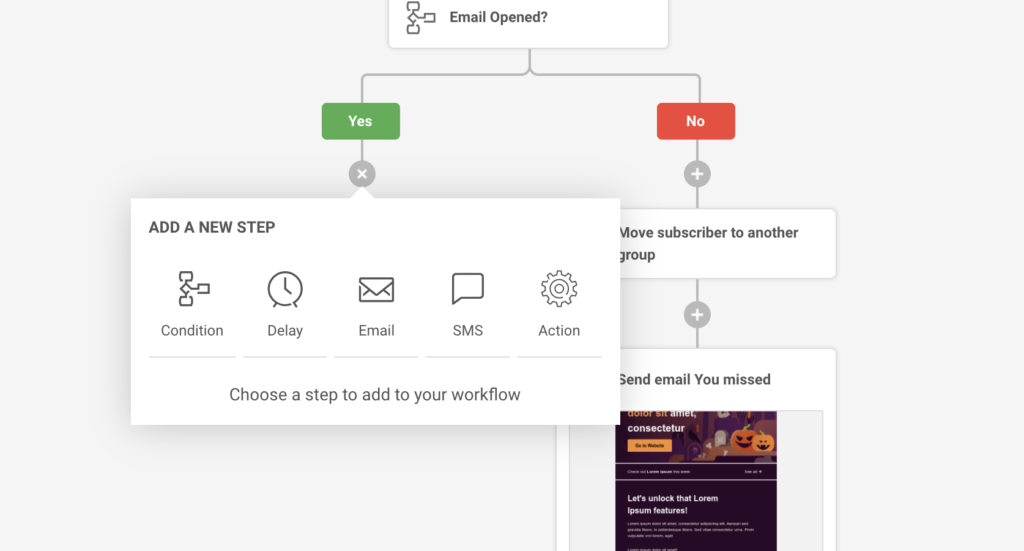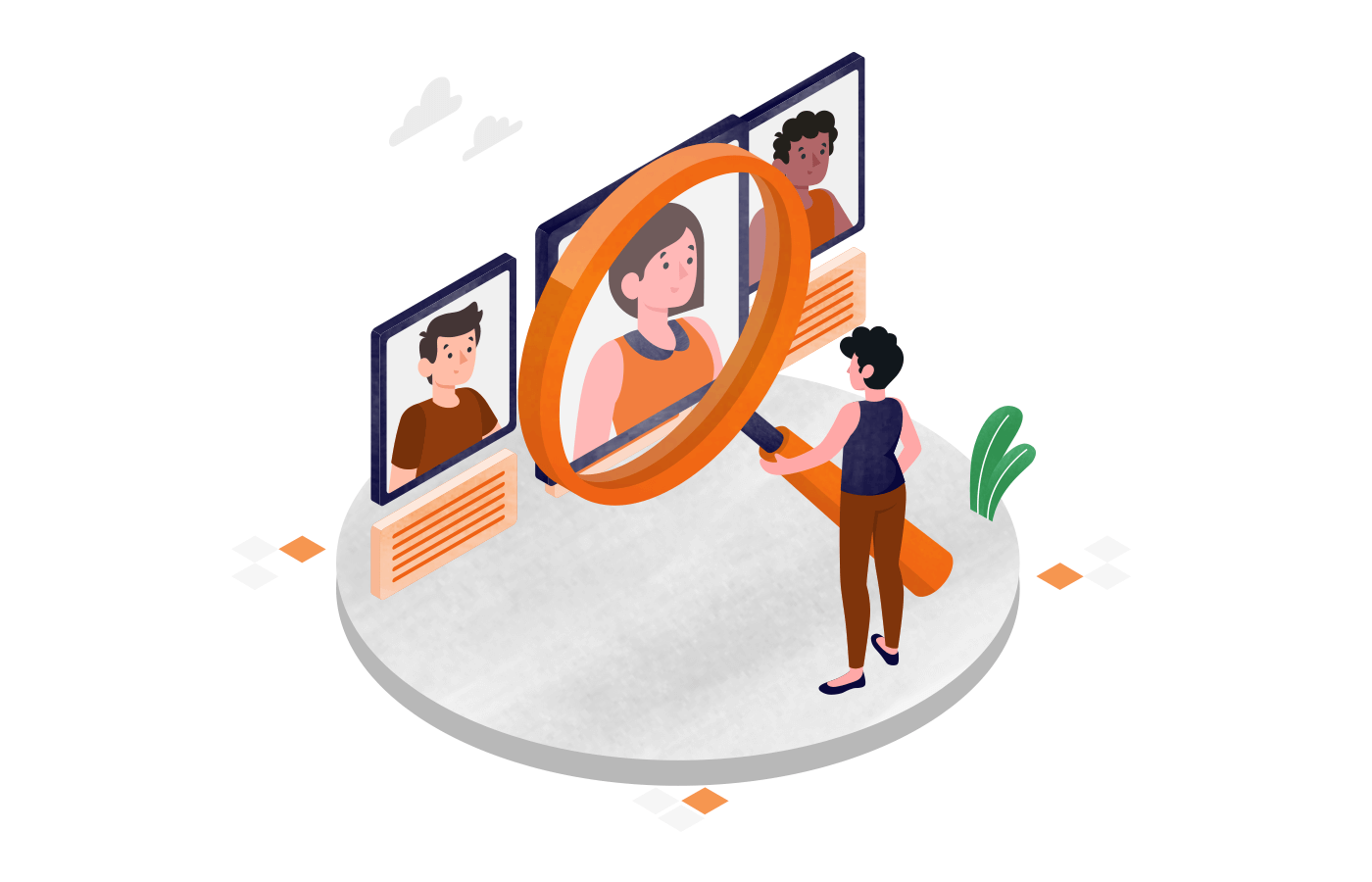What’s in a lead anyways? A lead is a lead.
We can imagine seeing you shaking your head slowly in disagreement. Because you not only know how important leads are to run a business in a competitive market, but you also understand by now that “not all leads are created equal”.
What are Leads in Marketing and Sales?
61% of marketers rank lead generation as their number one challenge (by Hubspot), while over 53% of them spend at least half of their budget on it (by BrightTalk).
Back to basics, what do leads mean? Keeping the definition of lead term very simple, you could say that a lead is an individual or business that is interested in your business.
They are keen to know more about the product or service you offer or at a deeper level, the problem you claim to solve.
They express this interest by:
- Sharing their email address on your landing page or website
- Leaving behind their phone number for a callback
- Engaging with your social media profiles
- Visiting your website
- Clicking on your Facebook or Google ad
Long story short, they execute an action to express their interest.
Why are Leads Important?
Leads are inarguably the lifeblood of business.
Let’s look at it this way.
Depending upon the niche you are in, out of the 100-odd people visiting your landing page or website, barely under 5 will end up purchasing something. That’s a conversion rate of 5%! At best!
While the rest are not ready to buy “just yet”.
Not every person who visits your website or interacts with your social media profile is ready to buy right now. So now it becomes important for you to nurture them using different techniques to convert them into paying customers in the mid to long term.
Look at the following definitions:
- Visitor – someone who merely visited your digital asset and left
- Lead – someone who performed an action (click etc).
- Prospect – someone who has shared information about themselves (so we can follow up) or bought a low-cost product or lead magnet.
- Customer – someone who has paid you for your product or service
- Brand Loyalist – a customer who goes all out to convert everyone they know over to your brand! Even if you are not paying them anything to do this!
Basically, every paying customer was a lead once. Every sale began with an interest.
So it is important to keep generating “interest” and inquiries for your product from leads whom your marketing and sales teams combined can then convert into a paying customers!
Lifecycle of a Lead
Depending upon where they are at, with respect to their buying journey, customers can be classified into one of the following three bins:
- Top of the Funnel (TOFU)
- Middle of the Funnel (MOFU)
- Bottom of the Funnel (BOFU)

These three stages combined, also represent the lifecycle of a lead.
Top of the Funnel (TOFU)
A new lead or prospect with a basic level of interest and awareness is said to be at this stage. They are neither “problem-aware” nor “solution-aware”.
For e.g. a casual sales inquiry where they are not aware that there is a real problem in the first place and that there exist solutions to solve the problem.
The main responsibility of a business that interacts with prospects at this stage would be to educate them in detail about the specific problems the prospect is facing and what it could cost them IF they do not solve them.
E.g.s of TOFU strategies
- Blog posts
- Research reports
- E-books
- White papers
- Informative Videos
Middle of the Funnel (MOFU)
A prospect is said to have entered the MOFU stage when they have become more “problem-aware” and can now point their finger and identify their pain points. But they are not yet “solution-aware”.
At this stage, a business is expected to provide the prospect with an understanding of what possibilities exist, that will solve their problems.
E.g.s of MOFU strategies
- Solution comparison guides
- Explainer Videos
- Podcasts
- Webinars
Bottom of the Funnel (BOFU)
In this stage, the prospect is fully “problem-aware” and “solution-aware”. These are highly qualified leads and ready to purchase.
Now a business will simply adopt a consultative approach to help the prospect understand why their solution is the best for the prospect’s use case.
E.g.s of BOFU strategies
- Case studies
- Vendor comparisons – w.r.to Features, Pricing
- Customer testimonials and Stories
- LIVE Demo or Trial
- FREE Consultation Call
Very naturally, you’ll always have the maximum number of leads at the TOFU stage, some of whom proceed into the MOFU stage, with a small percentage of these then entering BOFU.
Also read: Building Winning Lead Generation Funnel
What are the Two Main Types of Leads?
Marketing Qualified Leads (MQL)
A marketing qualified lead (MQL) is a prospect who has shown some degree of interest in your product but is not ready to purchase in the immediate or near term.
A market-qualified lead (a synonym for marketing leads) will undergo a lead-in lead nurturing process through marketing mechanisms such as email marketing, ads retargeting, invitations to LIVE webinars, etc. The idea is to educate the prospect about how your product or service can help solve the problem they seem to be facing.
All along, depending upon how well the lead engages with your marketing efforts, you will assign them a “lead score”. At its simplest, this could be a scorecard from 0 to 100 (with 100 representing maximum engagement and responsiveness).
Examples of “scoring opportunities” and engagements could include prospects
- Giving you dates for follow-up calls
- Interacting with your social media profile
- Replying to your emails
- Filling out online forms
- Submitting an email address for a newsletter or mailing list
- Favoriting items or adding items to a wishlist
- Adding items to the shopping cart
- Repeating site visits or spending a lot of time on your site
Once the “lead score” crosses a particular threshold (your company needs to define this internally), the lead is said to be “hot” and should be passed over to the sales team for followups and closure.
Sales Qualified Leads (SQL)
Sales leads meaning Sales qualified leads (SQL), are leads received from the marketing department that have indicated maximum purchase intent and hence are the most likely to convert.
The time of your sales team is precious and every lead cannot be pursued with the same degree of intensity. Hence they rely heavily upon the marketing teams efforts to “prepare” and “prime” leads into “hot prospects” who can then be closed with relative ease, resulting in the sales figures going up!
What is Lead Temperature?
Lead temperature is another way of looking at the readiness of the lead to buy. There are three possibilities:
- Cold – a lead is said to be cold when they are neither aware of the problems they face, or what you do to solve them. This type of lead looks upon you and what you claim with suspicion.
- Warm – a lead is said to be warm when they know both their problems as well as your product that could potentially help them. This type of lead is starting to like you and they are probably researching your business or solution up while still in the consideration stage.
- Hot – a lead is said to be hot when they have already bought from you before. This type of lead “trusts” you the most and will likely be the first to convert for upsells.
What is Lead Generation?
Lead generation is the simple process of generating interest in your product or service in a way that attracts leads and prospects who want to know more.
Lead generation is an essential marketing process whose sole purpose is ensuring your sales pipeline stays full. It is applicable to B2B (Business to Business) and B2C (Business to Customer) businesses of all sizes.
Also read: What is B2B Lead Generation? Definition, Strategies
What are the Best Lead Generation Methods?
Lead generation methods classify themselves into two broad categories:
- Inbound lead generation (good for achieving high-quality leads)
- Outbound lead generation (great for achieving a higher number of leads)
Inbound lead generation, also referred to as inbound marketing, refers to the process of “attracting” prospective customers. This can be done with a combination of strategies such as:
- Offline events and meetups to generate brand and product interest
- Content marketing – putting out high-quality content in the form of blogs, videos, podcasts
- Search Engine Optimization (SEO) techniques to ensure that your content ranks organically in Google for relevant keyword searches by prospects
- Google & Facebook ads etc to drive traffic to content inorganically
Outbound lead generation refers to the process of “outreaching” potential leads. Outbound lead generation uses a combination of the below techniques:
- Cold calling
- Cold “Outreach” emails
- Social Selling (you use social media channels in an attempt to build rapport with a network of potential leads)
As you can see, the major difference between inbound and outbound lead generation is in who initiates the conversation. Also, if you are more worried about the lead number and want to be more in control over the number of leads meaning the quantity first, then having a robust outbound lead generation funnel is a must.
Depending on the niche and a host of other factors, either inbound and outbound or a neat combination of both may be essential to a business to build a bulging pipeline of interested leads.
You could also carry out this function of lead generation in-house or if it is too taxing, outsource it.
Also, there are businesses in the lead generation game that are selling leads. Beware of buying from unverified sources as often these leads could be irrelevant to your business at best, and shared with other businesses in the worst-case scenario.
Also read: 25 B2B Lead Generation Strategies That Still Work
Effective Lead Nurturing
Lead nurturing is the process of forging solid relationships with your prospects in the sales pipeline. It is a chance to add life-changing value to your leads and customers helping them understand their own problems and your solutions better. So when they are ready to transact, the only business they can think of is yours.
79% of marketing leads never convert into sales, the common cause being lack of lead nurturing.
Marketing Sherpa
Lead nurturing can happen in a variety of ways including:
- Ads retargeting – showing relevant content, testimonials etc via paid media
- Social selling – engaging with prospects over social media channels
- Email marketing – often underrated, this is one of the least costly yet most powerful ways to get prospects to say YES to buying.
When it comes to email marketing, you should ideally look for an email marketing platform that provides:
- A straightforward, stupid-simple interface without any unnecessary bells and whistles.
- Powerful automation features for automated Emails & SMS based on trigger actions.
- Highly customizable, prebuilt email newsletter templates that you can edit with a drag-and-drop builder.
- Advanced reporting options for you to understand what’s working and what’s not.
- SMS messaging campaigns.

Take Sender for a spin with zero financial commitment, the FREE Forever plan gives you access to every top-tier feature, including automation and 15K monthly emails. Feel free to give it a shot!
Wrapping Up Leads
Use tested funnels to keep leading leads generation and attracting interest to your business. Initially, you may have to try out everything and eventually zero in on what works. Rinse. Repeat.
But then again, realize that not everyone is ready to buy your amazing product or service just yet. Those who buy right now, thank them, and those who don’t, just go ahead and have a solid lead nurturing funnel in place to take care of them.
Article contributor – Santosh Balakrishnan
